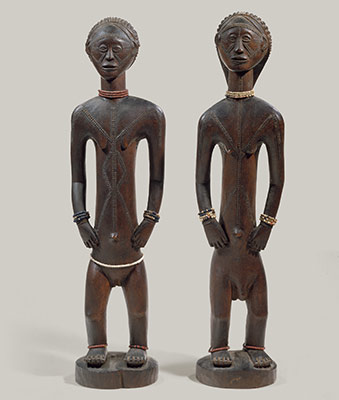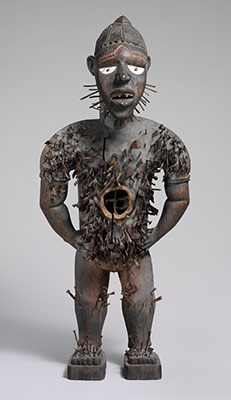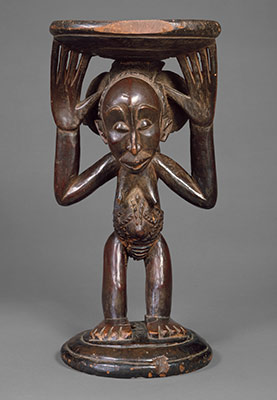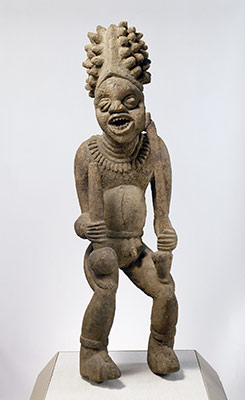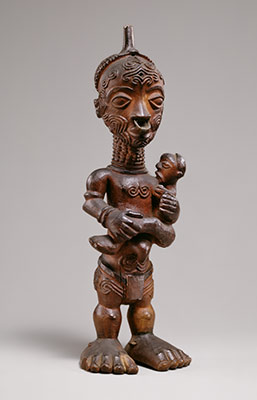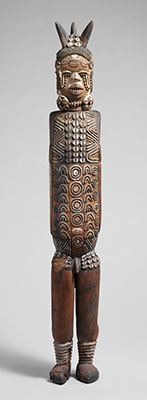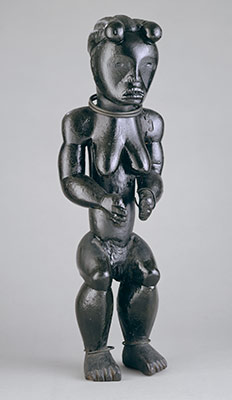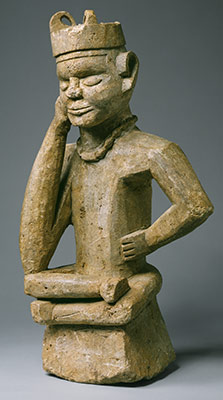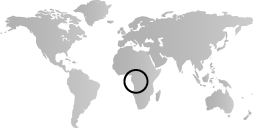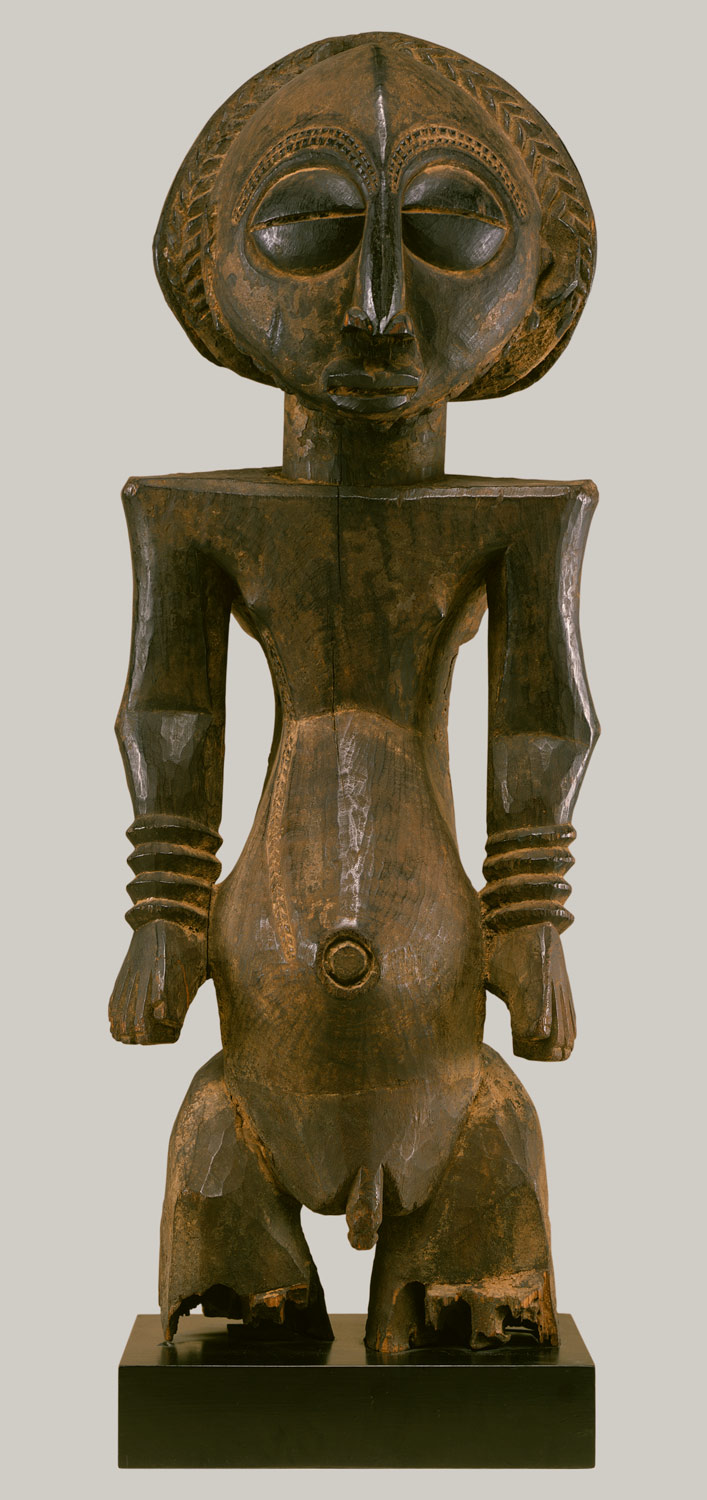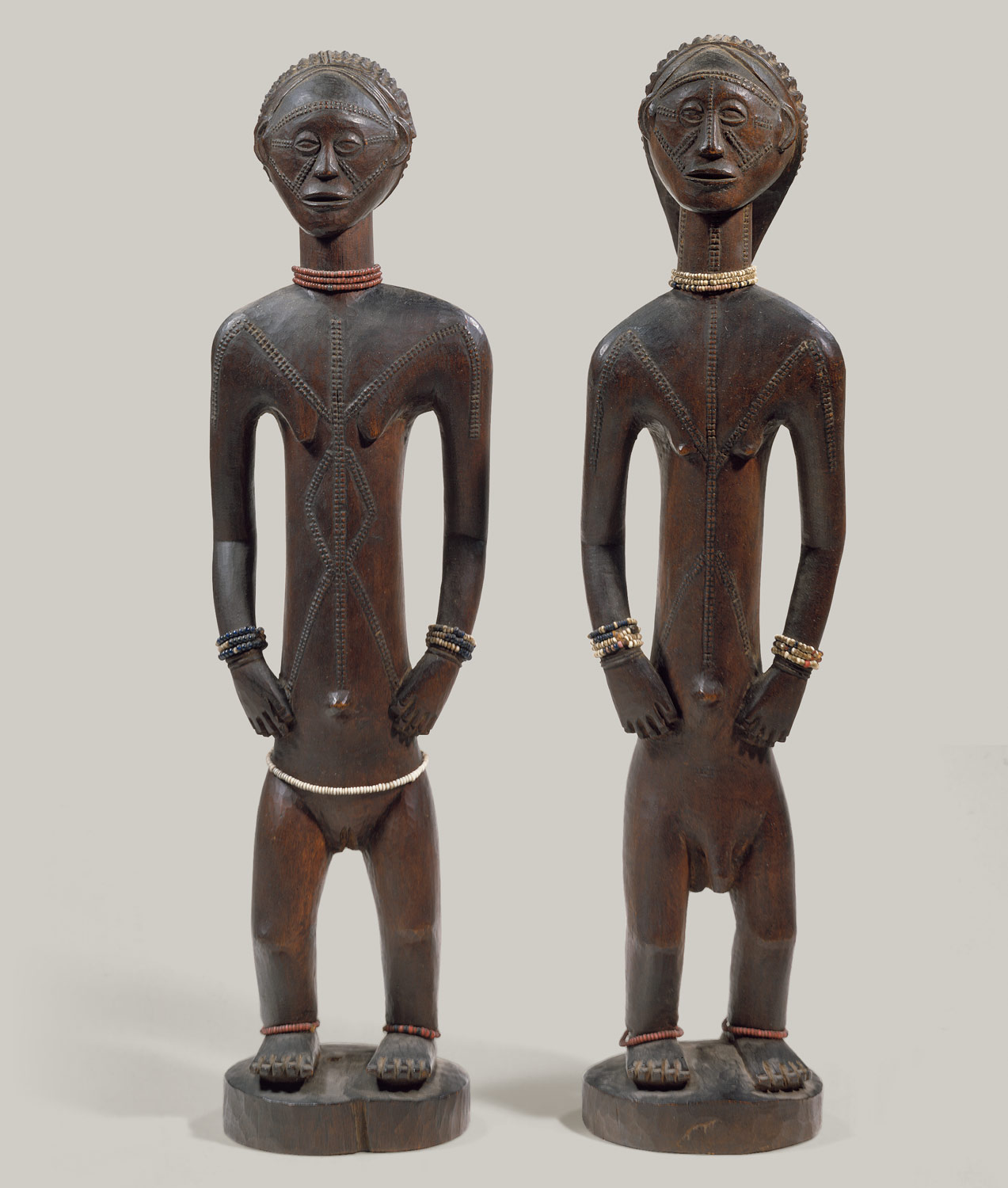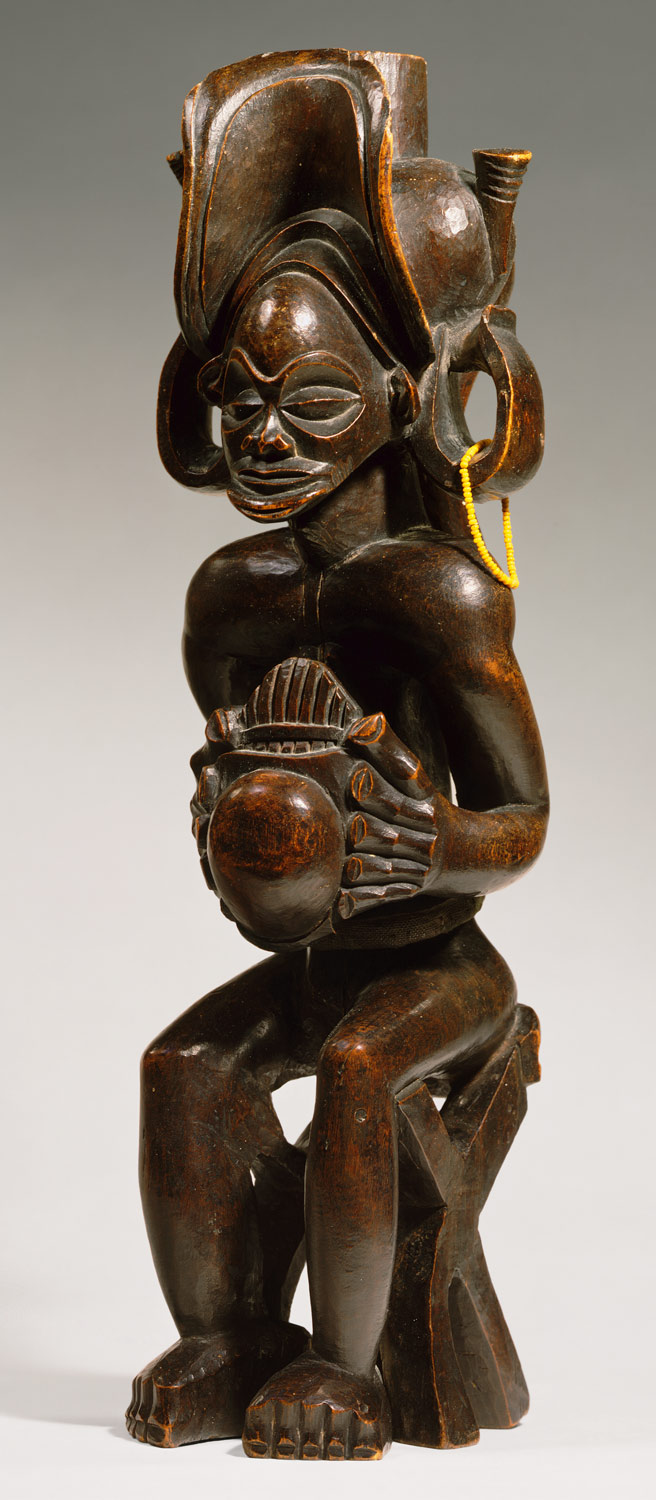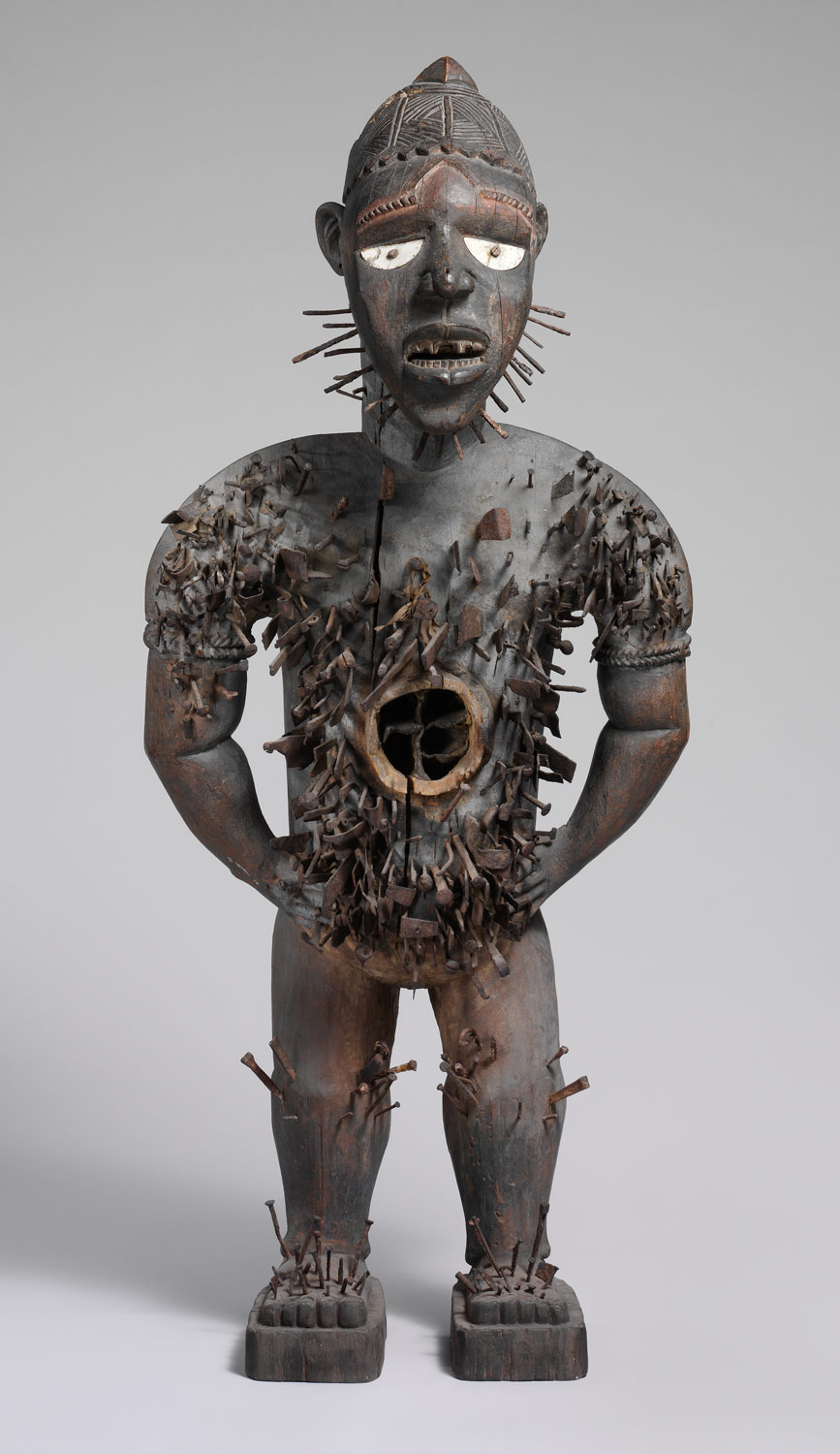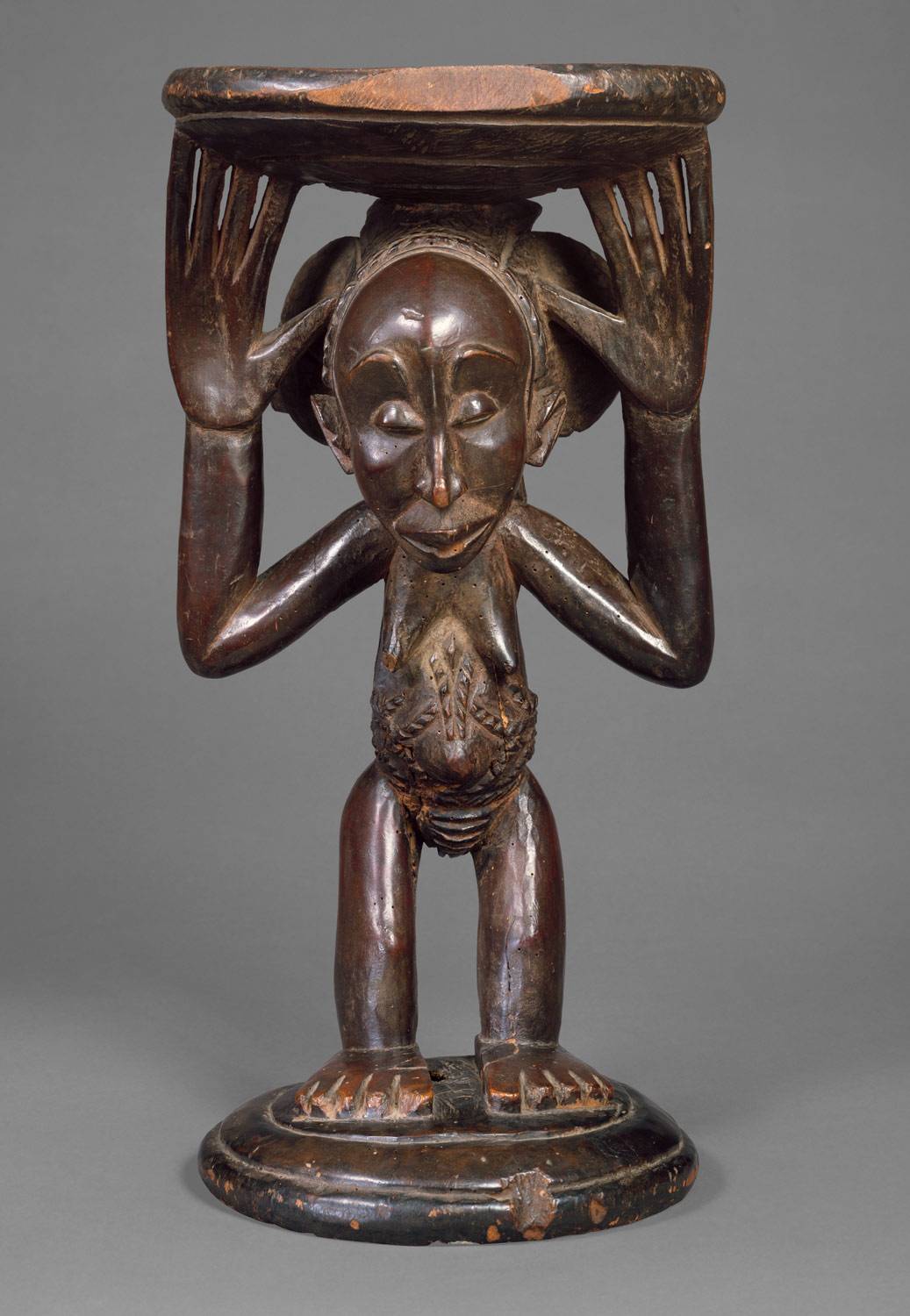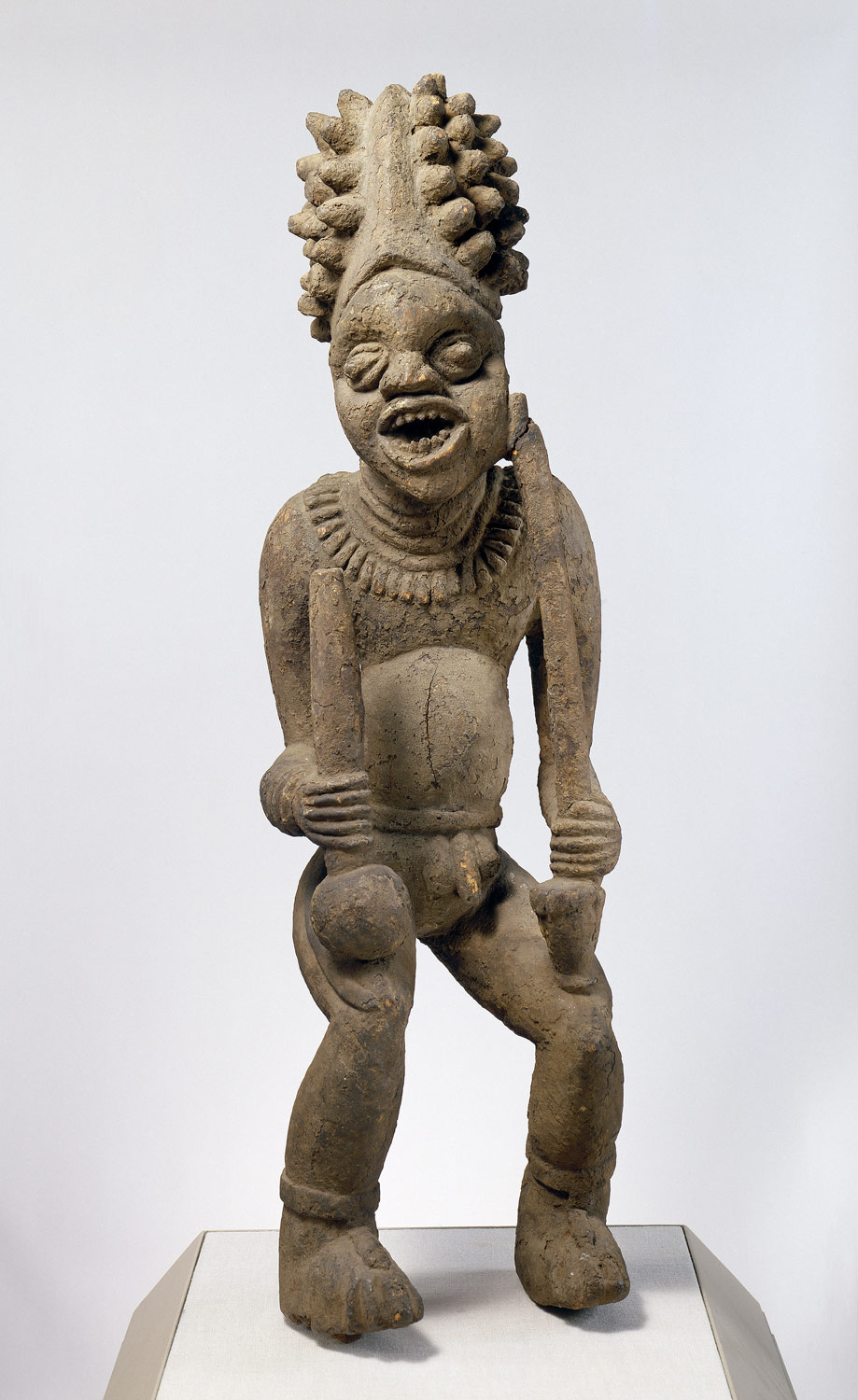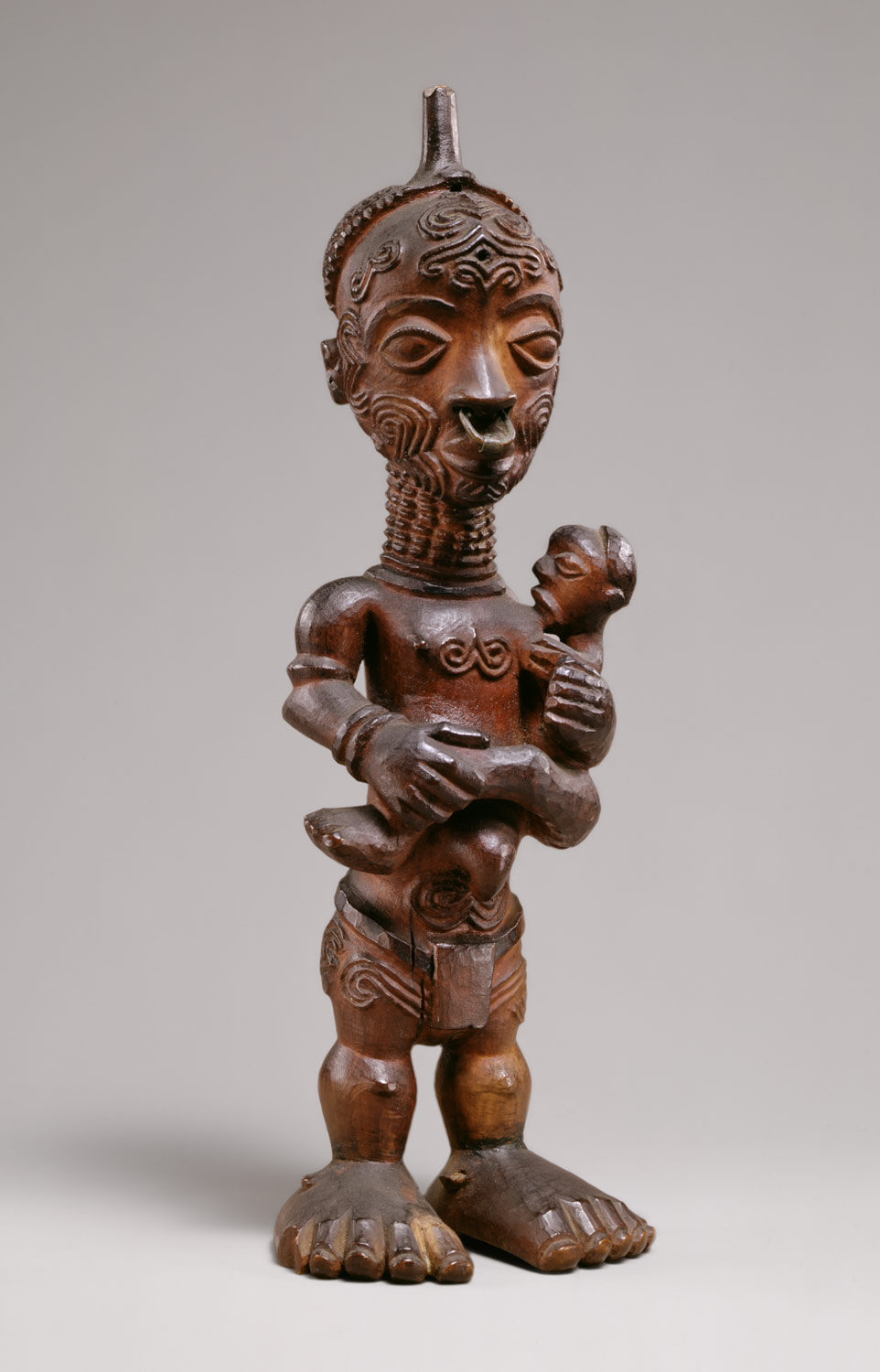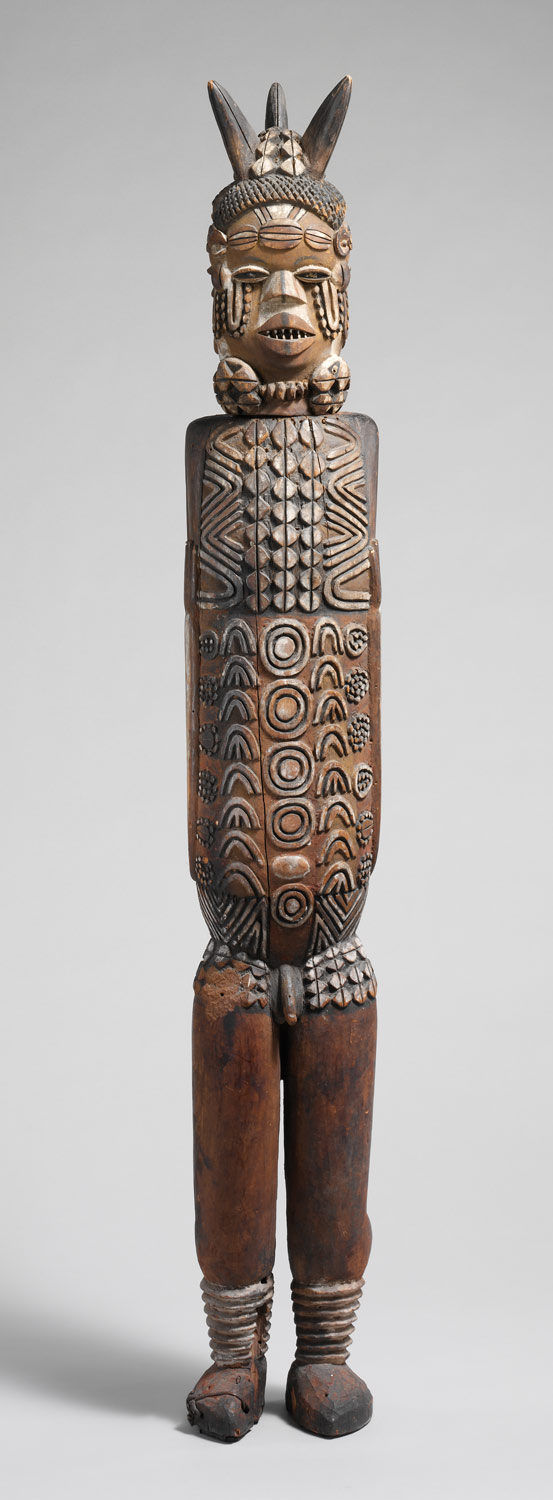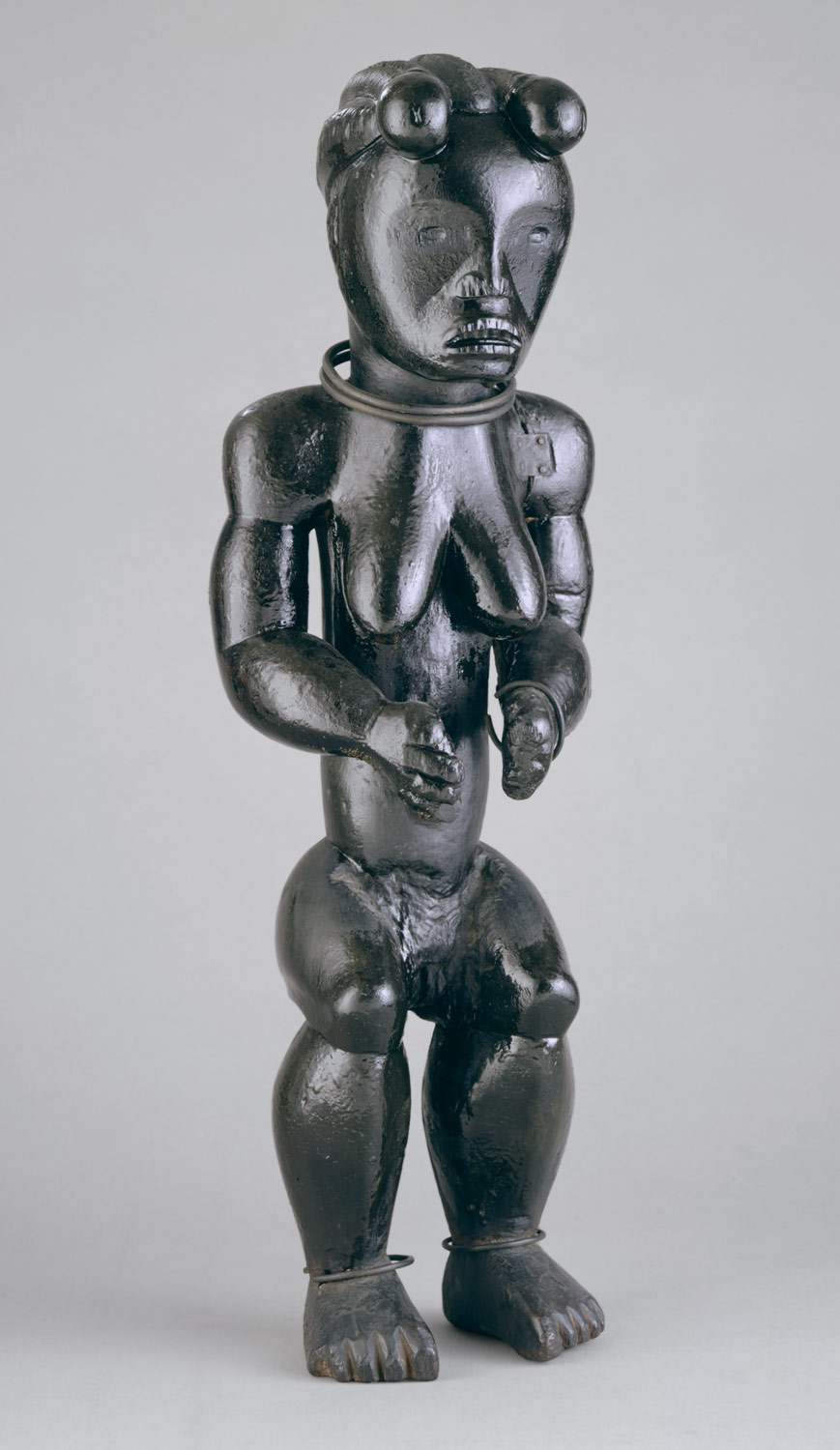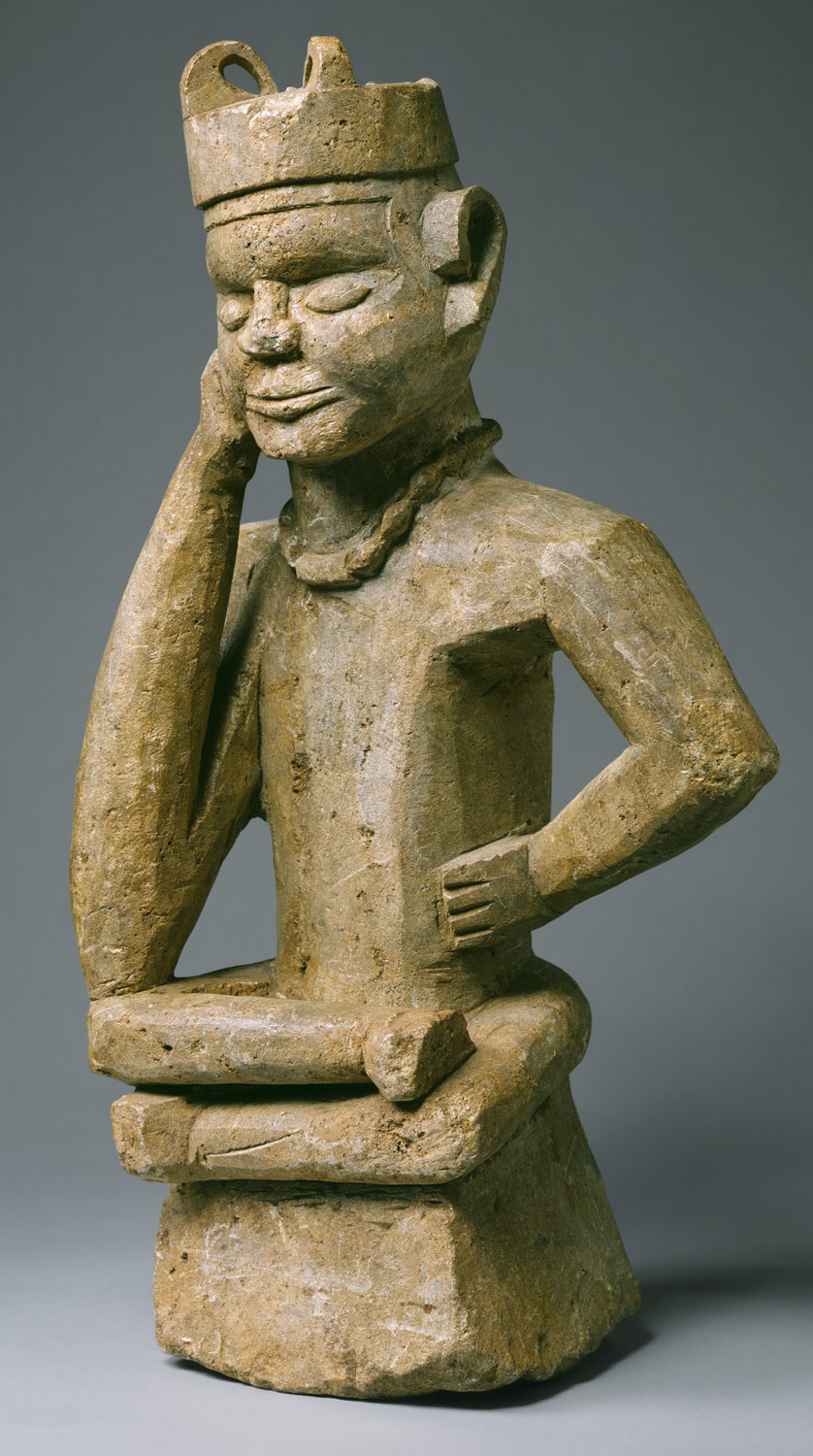The British ban on the international slave trade and the development of Arab-Swahili caravan routes from eastern Africa shifts the trade in slaves to the east. In western Central Africa, heightened demand for local African products such as ivory, wax, and rubber allows previously subjugated or isolated peoples such as the Chokwe to rise to economic prominence and displace traditional powers such as the far-flung Lunda and Luba states. Further east, the Arab-Swahili trade also deprives these polities of the trade on which they are dependent. The emergence of numerous small-scale chiefdoms results in the production of new forms of ornate and luxurious courtly arts across Central Africa. Elsewhere, extended periods of migration in present-day Gabon and political consolidation in modern Cameroon lead to the development of new forms of funerary and courtly art. The European partition of Africa in 1884 provides state support for German, Belgian, English, and Portuguese expeditions into Central Africa that supply newly created ethnographic museums and geographic societies with specimens of material culture from the region.
Central Africa, 1800–1900 A.D.
Timeline
1800 A.D.
1825 A.D.
1825 A.D.
1850 A.D.
1850 A.D.
1875 A.D.
1875 A.D.
1900 A.D.
Overview
Key Events
-
19th century
Greater European presence at Central African slave ports such as Luanda stimulates the production of African ivory carvings marketed to Western visitors. Generally carved from the tapered end of the tusk, the most common type features a continuous, bordered frieze of figures that spirals around the perimeter of the tusk, ending at the tip with a single figure carved in the round. These works generally include representations of Belgian or Portuguese slave traders, colonial bureaucrats in period dress, and African captives, as well as motifs reproduced from European printed matter such as calendars and religious texts.
-
ca. 1800–1870
Increasing pressure from Bamum, Chamba, and Fulani peoples in present-day Cameroon force Fang populations southward into what is today coastal Gabon. The nomadic nature of Fang existence at this time may have led to the development of transportable byeri figures and boxes designed to hold ancestral relics.
-
1820–1840
Under King Mbuembue, the Bamum kingdom in present-day Cameroon expands in size and economic importance. Bamum dynastic chronologies credit Mbuembue with the introduction of new art forms and rituals, perhaps adopted from conquered peoples.
-
1830s–1860s
A series of economic developments along the coast and immediate hinterland of present-day northern Angola and southern Democratic Republic of the Congo change the political landscape of the region. The British ban on the slave trade diminishes the demand for slaves and raises the value of locally produced commodities such as wax. The end of the Portuguese royal monopoly on ivory raises the price of this luxury material, while the industrialization of Europe creates a market for natural rubber. The Chokwe peoples, who are well armed and have access to land in which these materials are plentiful, quickly take control of trade in the Central African Atlantic region. Financially and politically ascendant Chokwe leaders assert their status and legitimacy by commissioning royal sculptures such as large, splendidly carved depictions of ancestral chiefs and European-style seats of leadership.
-
1850s
Arab-Swahili traders from the East African coast penetrate eastern Central Africa, connecting the coast with inland sources of copper along the upper Zambezi. Nyamwezi peoples of present-day central Tanzania, originally working on Arab-Swahili caravans, develop their own routes and emerge as a dominant trading power in East Africa. Descendants of these caravan operators, known as the Yeke, create a large polity out of parts of the Luba and Lunda empires between the upper Lualaba and Luapula rivers.
-
mid-19th century
A smallpox epidemic erupts in the western equatorial rainforests of present-day Gabon and Congo. Local peoples such as the Kwele develop and refine elaborate ritual methods to combat the spread of the disease, involving purification rites, consultation of family relics, and masked performances that evoke the protective power of nature spirits.
-
ca. 1860s?
The Buli Master, an artist of possibly Hemba ethnic origin, creates a corpus of stylistically distinct figurative insignia of leadership for Luba rulers. Celebrated for his expressionistic handling of traditional Luba subject matter (most notably mwadi, or female mediums of royal spiritual power), the Buli Master’s achievements are recognized through a corpus of nineteen known works in public and private collections in Europe and North America.
-
1865–1912
Yu, ruler of the Kom kingdom in present-day Cameroon, creates a series of monumental wood stool figures depicting members of the Kom royal dynasty. Carved of wood and covered in colorful glass beads, these works are displayed during royal funerals and coronations.
-
1870
German botanist Georg Schweinfurth reaches the Mangbetu court of King Mbunza (r. 1867–73) in present-day northeastern Democratic Republic of the Congo. His abundantly illustrated The Heart of Africa (1874) documents the monumental wood architecture of the capital and the opulent apparel, artworks, and bodily embellishments of the Mangbetu and Zande peoples. Schweinfurth’s open appreciation of the high level of artistry and craftsmanship displayed at the court is unusual during this period and fuels interest in this region among other European and American ethnographers.
-
1870–1890
The wealth and power of the Kuba kingdom reaches its apogee as exports in ivory, raffia, and camwood powder grow.
-
1870s
Changing patterns of trade result in an enormous influx of firearms to the previously remote Central African interior.
-
1870s–1890s
The Luba and Lunda states dissolve into small-scale chiefdoms under economic and political pressure from East African traders and European colonial forces. The ensuing political instability and disruption of local traditions result in the birth of utopian, millennialist, and traditionalist movements within the region, such as bene diamba among the Bashilange Luba and the worship of the spirit Kibawa among some Tabwa and eastern Luba peoples. Proponents of bene diamba, led by Kalamba Mukenge, espouse a modernizing vision of Luba society that celebrates new, imported technologies; animal sacrifice is banned, respect for elders ebbs, and ritual sculptures are systematically destroyed. Devotion for Kibawa centers on spiritual possession as a means of personal salvation. Adepts of the great earth spirit are required to reject nontraditional cultural imports such as Swahili, the language of colonial missionaries and coastal traders, in exchange for supernatural guidance and support. Ritual instruments associated with spirit possession, such as rattles and colorful beaded headdresses decorated with geometric designs and fringed with fur or feathers, seem to have proliferated at this time.
-
1878
King Leopold II of Belgium sponsors exploration of the Congo River Basin by Henry Morton Stanley.
-
late 19th century
Newly opened trade routes into the Central African interior introduce many native societies to cross-continental commerce, empowering a wealthy elite class with a demand for sophisticated “statement” art. Along the eastern shore of Lake Tanganyika, economically successful Tabwa chiefs employ their newfound wealth to assert greater local control, justifying their claims to power and regulating dynastic descent by commissioning elaborate depictions of fictional chiefly ancestors. Highly refined, naturalistic figures are created for affluent members of the Luluwa bwanga bwa cibola fertility association to the west. Previously of rough-hewn and schematic form, such later sculptures created for wealthier patrons are finely carved, bearing elaborate bodily decoration and jewelry.
-
1880
France controls the northern Congo region.
-
1880–1910
In what is today Democratic Republic of the Congo, a ritual expert (nganga) and the Yombe artist known today as the Chiloango River Master collaborate on the creation of a corpus of distinctive minkisi, or monumental power figures, called Mangaaka. Used by diviners to consult the spiritual realm for solutions to earthly crises, these works are characterized by their massive scale, naturalistic appearance, and intricately carved representations of knotted fiber headgear.
-
1884
The European powers partition Africa at the Berlin Conference.
-
1884–1918
Cameroon remains a German protectorate until Germany’s defeat at the end of World War I in 1918, when control passes to France. Throughout this period, German museums acquire numerous important examples of Cameroonian art. Among the most significant works is the late nineteenth-century beaded throne of King Nsa’ngu of Bamum, which is presented to German emperor Wilhelm II in 1908 by Nsa’ngu’s son Njoya. Today the throne forms part of the Cameroon collection of the Museum für Völkerkunde in Berlin.
-
1885–1908
The Belgian Free State is designated the private property of King Leopold of Belgium.
-
1885–early 20th century
The White Fathers, a Catholic missionary group organized to convert non-Christian areas of Africa, is established in the southeastern Congo. Originally seeking to carve out an independent “Christian Kingdom” within territory largely inhabited by Tabwa and related peoples, the White Fathers sponsor missionary schools and produce dictionaries, grammars, and a translation of the Bible in the local KiTabwa language. After 1900, as control over the Belgian Free State is consolidated and ultimately transferred to the Belgian republican government, the White Fathers abandon their territorial aspirations and focus on conversion. Large numbers of indigenous religious sculpture as well as trees and stones associated with earth spirit sites are destroyed, while others are confiscated and sent to the White Fathers headquarters in Belgium and Rome.
-
ca. 1892–1933
The reign of Njoya, king of Bamum, is characterized by a remarkable florescence of courtly traditions and the celebration of Bamum history and culture. An enthusiastic patron of artistic and architectural projects, Njoya establishes art schools at the court and encourages textile production. He also creates a written language and writes a history of the kingdom and a guide to its rituals. His kinsman Prince Ibrahim Njoya designs and oversees the construction of a three-story palace for the ruler and authors a series of illustrated chronologies of the Bamum kings. Despite their unconventional design and use of Western materials (watercolor and crayon on paper), Ibrahim’s kinglists reflect traditional practices of recording dynastic succession and royal portraiture. German visitors to the court produce extensive photographic documentation of Bamum’s achievements and innovations at this time.
Citation
“Central Africa, 1800–1900 A.D.” In Heilbrunn Timeline of Art History. New York: The Metropolitan Museum of Art, 2000–. http://www.metmuseum.org/toah/ht/?period=10®ion=afc (October 2004)

